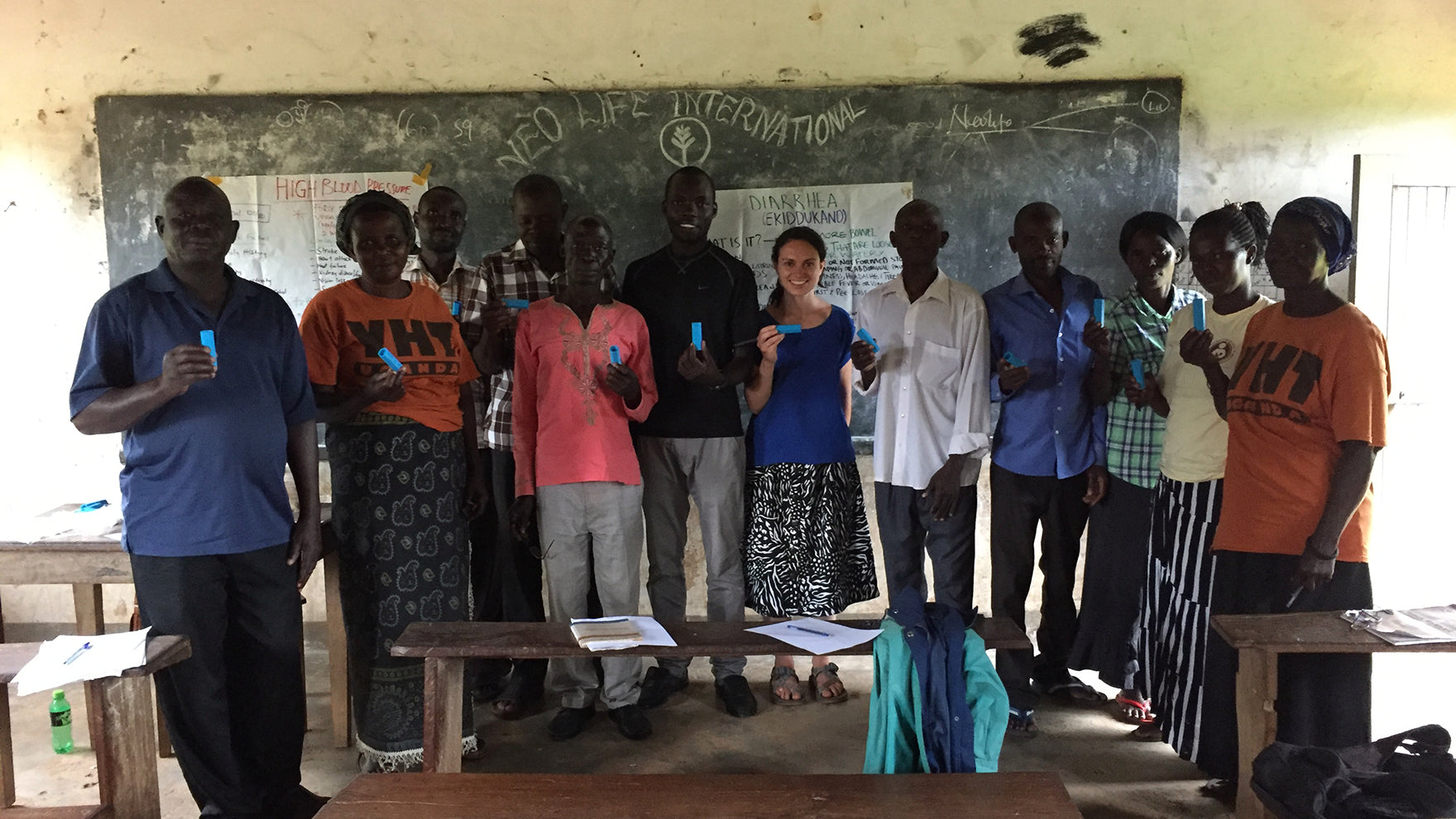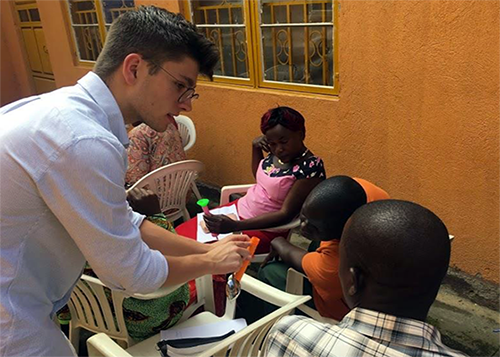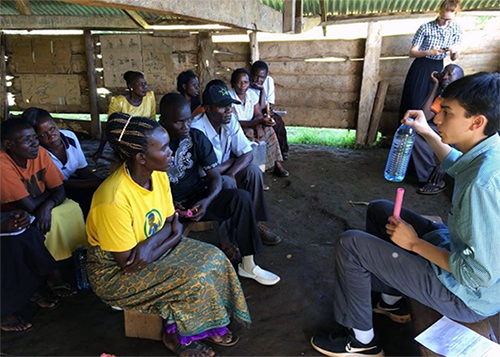
Three years ago, two seniors at Winchester Thurston School in Pittsburgh wanted to solve a major problem halfway around the world. With the support of their school and the use of a MakerGear 3D printer, they are doing just that.
The students - Jack Waters and Jacob Dubner - had discovered a major problem with efforts to combat diarrheal diseases like cholera in developing nations. They had found that a common treatment practice - the use of Oral Rehydration Solutions (ORS) - was unreliable because people often measured inaccurate ORS concentrations.
The solutions are usually made by adding water to a pre-measured packet of salt and sugar, or by measuring out the individual ingredients. But the pre-measured packets are often out of stock and the suggested alternative method of using a pinch of salt and a palm full of sugar is inaccurate.
So, Jack and Jacob submitted a proposal to Science Department Chair and STEM Education Teacher Graig Marx for a device that allows anyone to properly measure the solutions.
Students in Marx’ engineering and design class are turned loose on projects with only one requirement: They must develop a product that helps people. This unique mix of pedagogical practices, fusing product development and altruism, results in thoughtful problem-finding and creative problem-solving.
 The device Jack and Jacob invented is called the ORTube. The simple yet effective tube consists of a smaller space for measuring the accurate amount of salt and a larger opening for the sugar.
The device Jack and Jacob invented is called the ORTube. The simple yet effective tube consists of a smaller space for measuring the accurate amount of salt and a larger opening for the sugar.
“You pour it in a 1-liter bottle of water and you have a perfect DIY Pedialite,” Marx says. “It’s genius!”
But getting to that genius idea took a while. Jack and Jacob tested a variety of ways to both transfer and measure the salt and sugar into their tube. They pitched one of their early designs to Omni Med, a nonprofit that trains health workers to administer ORS in Uganda. Omni Med ordered a small batch of the tubes to test them in the field.
In order to successfully deliver on the ORTubes for Omni Med, the students turned to a MakerGear 3D printer for production. Throughout the iterative design stage Jack and Jacob dove into the process behind 3D printing and the difference between the printers available to them. They chose the MakerGear 3D printer for its speed and reliability.
The students often printed six ORTubes at a time, letting the printer run for 18+ hours, always returning to successful prints. They experimented with a variety of plastics and nozzle diameters, ultimately settling on a 0.50 mm nozzle and an FDA-approved, dishwasher safe, high-temp PLA. The ability to quickly change out extruders on the MakerGear 3D printer and fine-tune the temperature settings of both the extruder and the heated bed ensured reliable and repeatable prints every time.

Armed with feedback from the field testing, Jack and Jacob re-worked their design and grew their relationship with Omni Med, while successfully navigating their freshman year of college. In June of 2018, they again used the MakerGear 3D printer to deliver a fresh batch of ORTubes to Uganda. This time they traveled with Omni Med to personally train the health workers and experience life in Uganda as they collected data on the use of their device.
Jack and Jacob are on their 18th iteration of the ORTube. They used feedback from their trip to make the tube function more intuitively. Plus, the final design could be more easily produced via injection molding.
In June and July of this year, Jack and Jacob printed 650 ORTubes in batches of six to nine at a time on two MakerGear 3D printers. With an average of about 10 hours per batch, that equaled to about 870 hours of printing.
“We had not one clog,” Marx says. “And that’s even though both of the machines were already at veteran status, having been used in my engineering and design class for two years.”
The new tubes have been sent to Uganda and been distributed by Omni Med. Jack and Jacob plan to return to Africa to gather data on the new tubes in the summer of 2020.
In the meantime, their project has inspired Marx to launch a new STEM design challenge for schools in the Western Pennsylvania region. Design to Make a Difference is in its third year, providing access to equipment, training for teachers, and a platform for students to showcase their work.
“Jack and Jacob were the inspiration for this program,” Marx says. “I think there are a couple of Jacks and Jacobs, or Janes and Jennies, at every school. Think about how much good these kids can do, if provided the opportunity and inspiration!”
For more information on how to support Jack and Jacob’s project and Design to Make a Difference, contact Graig Marx at DesignToMakeADifference@gmail.com.